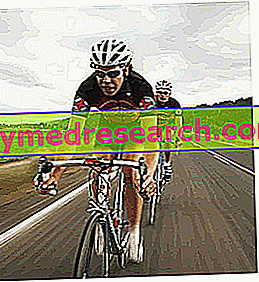Generality
Normally, the term "antispasmodics" - or spasmolytics, if you prefer - refers to all those drugs used in the treatment of smooth muscle spasms, especially the smooth muscles of the gastrointestinal tract.

The active ingredients belonging to the antispasmodics category are different. These active ingredients act on different sites and with different mechanisms of action, which will be briefly described below.
Antimuscarinic antispasmodics
As can be easily deduced from their own name, antispasmodics with antimuscarinic action exert their activity through the antagonization of muscarinic-type acetylcholine receptors, present in the gastrointestinal tract.
The activation of these receptors, in fact, causes excitation, hence the contraction of the gastrointestinal smooth muscle cells.
This category of antispasmodics includes active ingredients such as octatropin (Valpinax®) and scopolamine (Buscopan®, Buscopan Compositum®, Erion®).
Furthermore, active ingredients such as rociverine (Rilaten®) and cimetropium bromide (Alginor®) can also be included in this group. In fact, these molecules are able to exert a competitive antagonist action against muscarinic receptors located at the level of the gastrointestinal smooth muscle.
The typical side effects of this class of antispasmodics are: dry mouth, mydriasis, constipation and drowsiness. In some rare cases tachycardia may also occur.
Antispastic inhibitors of phosphodiesterases
Papaverine and papaverine-like substances belong to this class of antispasmodic drugs. This particular alkaloid, in fact, is able to inhibit the enzyme phosphodiesterase at the gastrointestinal level, through a mechanism of action that has not yet been fully identified. This inhibition leads to an increase in the levels of cyclic Adenosine Monophosphate (known more simply as cyclic AMP), the consequence of which is the release of the gastroenteric smooth muscle.
For the treatment of this kind of disorders, papaverine is usually found in pharmaceutical preparations in association with extracts of Belladonna (Antispasmina Colica®), a plant rich in atropine, a well-known alkaloid with antimuscarinic activity.
The main side effects that can occur following the use of papaverine are: nausea, vomiting, constipation, difficulty in urinating, sight disorders and dizziness.
Instead, among the active ingredients with antispastic activity having a papaverino-like mechanism of action, we remember the rociverine which, as stated, is also able to exert an antimuscarinic type effect.
Antispastic COMT inhibitors
The COMT - that is the Catecol-O-Methyl Transferase - are particular enzymes dedicated to the degradation of catecholamines such as adrenaline and noradrenaline.
These molecules are able to stimulate the adrenergic receptors present in the gastrointestinal tract, thus favoring the relaxation of smooth muscles.
Therefore, through the inhibition of the enzymes responsible for the metabolism of these catecholamines, the antispasmodics in question are able to increase - albeit indirectly - the adrenergic signal, thus leading to the relaxation of the gastroenteric smooth muscle.
The floroglucina (Spasmex®) belongs to this group of antispasmodics. This active ingredient is particularly well tolerated. So much so that the side effects deriving from its use so far reported only concern the occurrence - in rare cases - of allergic reactions that can occur on the skin.



